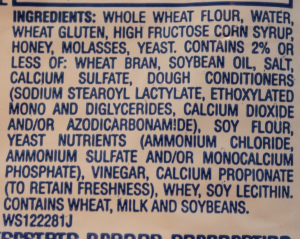Recuperation, in the sociological sense, is the process by which politically radical ideas and images are twisted, co-opted, absorbed, defused, incorporated, annexed and commodified within media culture and bourgeois society, and thus become interpreted through a neutralized, innocuous or more socially conventional perspective. More broadly, it may refer to the cultural appropriation of any subversive works or ideas by mainstream culture. — retrieved from https://en.wikipedia.org/wiki/Recuperation_(politics)
In 1940, Walter James (Lord Northbourne) wrote a book entitled Look to the Land — in it, he first used the term “organic” as applied to agriculture. He derived the term from the concept of “farm as an organism.” This was a rebuttal to the chemical farming techniques in use at the time. Lord Northbourne wanted farming to return to a more holistic practice — one in which soil health and plant/animal diversity was key.
Fast-forward 80 years to the present day. “Organic” foods can be found everywhere — in Walmart…. in Costco….. even brands such as Perdue Chicken have an “organic” line. Yes, these products are certified as “organic” because they have adhered to the various guidelines required. First, and foremost, this means the products should be clean of herbicides and pesticides — this is what most people think of as”organic.” Obviously, these products are better for us and the environment than conventionally farmed ones, but something of the original spirit and intent has been lost. In a nutshell, when we begin industrializing the production of these products, that beautiful idea of “farm as an organism” evaporates.
When evaluating agricultural procucts, I like to look at production quantities first — this is the whole point of industrialization — to increase quantity! An example: a single farmer produces eggs for sale at a farmer’s market. He has 40 chickens that run around eating bugs in the garden and leaving manure throughout. This is along the lines of a “farm as an organism” — it is a holistic being with all sorts of symbiotic relationships. The other side of the coin would be mass produced, industrialized “organic” eggs. Here you find thousands of birds locked in cages, fed the cheapest food possible (to keep overhead to a minimum), living in very unhealthy conditions…. you get the picture. This is not a holistic, “farm as an organism” setting.
So, when is that threshold crossed? When do production numbers obliterate the original concept of “organic?” I can’t say. But I do know that the use of the term “organic” has been recuperated by big industry and know it means nothing. The same has been happening in the “biodynamic” world, where this term has been recuperated as well. Being “biodynamic” is so much more than merely utilizing the various preparations and using the calendar. Keep your eyes open and mark my word, we will see more and more “biodynamic” products popping up in the industrialized sector.
So…. what’s this have to do with wine? Wine is a difficult product to scrutinize. There is no ingredient label on a bottle of wine. Unless we are fortunate enough to visit where the wine is made, we really know very little about the farming practices. So, for me, I like to know quantities produced. “Biodynamic” is an intimate art, and if the farm is too large all that vital energy fades. Large farms are mono-crops, and mono-crops are the antitheses of holistic farming.
Don’t be fooled by labels. I guarantee you, there is a marketing meeting happening at E&J Gallo as we speak, and the guys in suits are talking about a “biodynamic” line. If you can’t meet your wine maker directly, at least know where the agenda of the importer/distributor lies.

 ed crap — right-off the bat all you need to do is look at the list of ingredi
ed crap — right-off the bat all you need to do is look at the list of ingredi